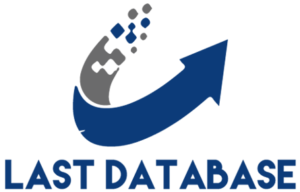So, now you might ask yourself if an Agile application development method is so product-oriented, how come it can ruin your mobile app? Let’s see.
1. Messed-Up Stand-Ups
Stand-up meetings are a signature attribute of the Agile approach. At the same time, stand-up meetings by themselves don’t necessarily indicate an Agile team. The important thing is to stick to the core nature of these stand-up meetings:
- Have a strict outline and rigid time algeria phone number data frame for when and how long you stand up
- Report on what has been done, plan next steps, and pinpoint obstacles
- Do not try to solve any problems during the meeting
- Attendance is a must for all team members
By the way, did you know that the Agile Manifesto itself does not have a single word “meeting” or “stand-up”? What its founders had to say on the matter is the following:
The most efficient and effective method of conveying information to and within a development team is face-to-face conversation.
Notice how every meeting adds to the Agile app development progress, so improve stand-up meetings.
Best Practices:
- Make sure each team member voices his or her concerns, even if there is only a small hint at some obstacles ahead.
- Welcome constructive disagreement; everyone should freely share their opinions.
2. Obscure Roles
Scrum Master, Product Owner, Stakeholder, and other team members — they all build your app. And everybody should be clear about everybody else’s responsibilities. Our advice is to articulate who handles what from the start. There are too many Agile flavors, and too many team roles accordingly.
To bring to the project the people who have we also recommend that you read the following materials never worked within the Agile framework is one thing. To gather novice programmers — is another. Those mistakes aside, you should look out for the following red flags:
- When your Scrum Master takes on the duties of a project manager.
Agile is a bottom-up rather than top-down approach. Team collaboration prevails over strict task assignments by Scrum Master. - When your Scrum Master becomes the central hub for all communications.
If team members avoid talking face-to-face and rely on a Scrum Master to deliver messages, it’s a sign. Here’s how the Agile founders framed this in their manifesto:
Business people and developers must work together daily throughout the project.
3. Outdated Product Backlog
Everyone should always have enough tasks to work on and make progress with the product. After all, frequent deliveries are one of the Agile’s cornerstones. An empty backlog demotivates the development team and stops its momentum. No one wants a product backlog running low on tasks.
Agile processes promote sustainable development. The sponsors, developers, and users should be able to maintain a constant pace indefinitely.
Even though product backlog is the Product contact lists Owner’s responsibility, it makes sense to help him at the start of an Agile app development project.
Best Practices:
- Breake down the app’s functionality into separate measurable tasks.
There should be high-level estimates for all features in the backlog. - Product Owner may need Team Architect’s or Tech Lead’s help with assigning priority to tasks.
While building the app, there is a specific path to follow: from architecture design and backend development to UI and server integration. Your Agile team must always work on the app’s functionality that has the most priority.
4. Lack of Retro
Retrospective meetings happen for a reason:
At regular intervals, the team reflects on how to become more effective, then tunes and adjusts its behavior accordingly.
The keyword is “regular”. In an ideal world, retrospective meetings take place after every sprint. All members reflect on progress versus expectations and work out a roadmap for the next sprint. Check out this video on what a perfect retro looks like:






